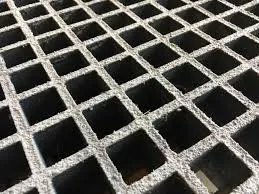
-
 Afrikaans
Afrikaans -
 Albanian
Albanian -
 Amharic
Amharic -
 Arabic
Arabic -
 Armenian
Armenian -
 Azerbaijani
Azerbaijani -
 Basque
Basque -
 Belarusian
Belarusian -
 Bengali
Bengali -
 Bosnian
Bosnian -
 Bulgarian
Bulgarian -
 Catalan
Catalan -
 Cebuano
Cebuano -
 China
China -
 China (Taiwan)
China (Taiwan) -
 Corsican
Corsican -
 Croatian
Croatian -
 Czech
Czech -
 Danish
Danish -
 Dutch
Dutch -
 English
English -
 Esperanto
Esperanto -
 Estonian
Estonian -
 Finnish
Finnish -
 French
French -
 Frisian
Frisian -
 Galician
Galician -
 Georgian
Georgian -
 German
German -
 Greek
Greek -
 Gujarati
Gujarati -
 Haitian Creole
Haitian Creole -
 hausa
hausa -
 hawaiian
hawaiian -
 Hebrew
Hebrew -
 Hindi
Hindi -
 Miao
Miao -
 Hungarian
Hungarian -
 Icelandic
Icelandic -
 igbo
igbo -
 Indonesian
Indonesian -
 irish
irish -
 Italian
Italian -
 Japanese
Japanese -
 Javanese
Javanese -
 Kannada
Kannada -
 kazakh
kazakh -
 Khmer
Khmer -
 Rwandese
Rwandese -
 Korean
Korean -
 Kurdish
Kurdish -
 Kyrgyz
Kyrgyz -
 Lao
Lao -
 Latin
Latin -
 Latvian
Latvian -
 Lithuanian
Lithuanian -
 Luxembourgish
Luxembourgish -
 Macedonian
Macedonian -
 Malgashi
Malgashi -
 Malay
Malay -
 Malayalam
Malayalam -
 Maltese
Maltese -
 Maori
Maori -
 Marathi
Marathi -
 Mongolian
Mongolian -
 Myanmar
Myanmar -
 Nepali
Nepali -
 Norwegian
Norwegian -
 Norwegian
Norwegian -
 Occitan
Occitan -
 Pashto
Pashto -
 Persian
Persian -
 Polish
Polish -
 Portuguese
Portuguese -
 Punjabi
Punjabi -
 Romanian
Romanian -
 Russian
Russian -
 Samoan
Samoan -
 Scottish Gaelic
Scottish Gaelic -
 Serbian
Serbian -
 Sesotho
Sesotho -
 Shona
Shona -
 Sindhi
Sindhi -
 Sinhala
Sinhala -
 Slovak
Slovak -
 Slovenian
Slovenian -
 Somali
Somali -
 Spanish
Spanish -
 Sundanese
Sundanese -
 Swahili
Swahili -
 Swedish
Swedish -
 Tagalog
Tagalog -
 Tajik
Tajik -
 Tamil
Tamil -
 Tatar
Tatar -
 Telugu
Telugu -
 Thai
Thai -
 Turkish
Turkish -
 Turkmen
Turkmen -
 Ukrainian
Ukrainian -
 Urdu
Urdu -
 Uighur
Uighur -
 Uzbek
Uzbek -
 Vietnamese
Vietnamese -
 Welsh
Welsh -
 Bantu
Bantu -
 Yiddish
Yiddish -
 Yoruba
Yoruba -
 Zulu
Zulu
frp trough cover
Understanding FRP Trough Covers A Comprehensive Overview
Fiber Reinforced Polymer (FRP) trough covers have emerged as a crucial element in modern construction and infrastructure projects. These covers are designed to provide reliable protection for various troughs used in water management, drainage, and cable routing. The increasing demand for durable and lightweight materials has positioned FRP as a preferred choice over traditional materials like metal and concrete.
What is FRP?
FRP is a composite material made from a polymer matrix reinforced with fibers, commonly glass, carbon, or aramid. This combination provides enhanced strength, corrosion resistance, and a lighter weight compared to conventional materials. As a result, FRP is not only strong but also easy to handle and install. Its versatility makes it suitable for a range of applications, including construction, transportation, and utilities.
Benefits of FRP Trough Covers
1. Durability One of the significant advantages of FRP trough covers is their resistance to corrosion and degradation. Unlike metal covers that may rust or deteriorate in harsh environmental conditions, FRP materials remain intact, ensuring longevity and reducing maintenance costs.
2. Lightweight The lightweight nature of FRP makes it easier to transport and install. This characteristic can lead to reduced labor costs and quicker project completion times. Additionally, less weight means that the supporting structures do not need to be as robust, potentially saving further on materials and costs.
3. Safety FRP trough covers are designed with safety in mind. They typically have anti-slip surfaces, making them safer for foot traffic in industrial or outdoor settings. Furthermore, they can be designed to meet specific load-bearing requirements, ensuring they can withstand various types of stress.
frp trough cover

4. Customization FRP is highly customizable, allowing for a range of designs and specifications tailored to specific project needs. This flexibility can include various colors, shapes, and sizes, making it easy to integrate into existing infrastructure.
5. Environmental Benefits With an increasing focus on sustainability, FRP materials can be manufactured with recycled content and are often fully recyclable themselves. This makes them an environmentally friendly option for construction projects.
Applications of FRP Trough Covers
FRP trough covers are utilized in various settings, including
- Municipal Applications They protect stormwater and sewer systems, ensuring effective drainage and minimizing the risk of flooding and other water-related issues. - Industrial Settings In factories and plants, FRP covers can encase electrical conduits and cables, reducing the risk of accidental damage and enhancing safety.
- Transportation Used in transportation infrastructure, such as bridges and roads, FRP trough covers help manage drainage efficiently, thereby extending the lifespan of the structures.
Conclusion
As building practices continue to evolve, the use of innovative materials like FRP becomes indispensable. FRP trough covers offer a combination of durability, safety, and customization that meets the increasing demands of modern projects. By choosing FRP, project managers and engineers can ensure not only the immediate effectiveness of their infrastructure but also contribute to long-term sustainability goals. As awareness grows, FRP is poised to become a staple in a diverse range of applications, leading the way toward a more resilient future.









